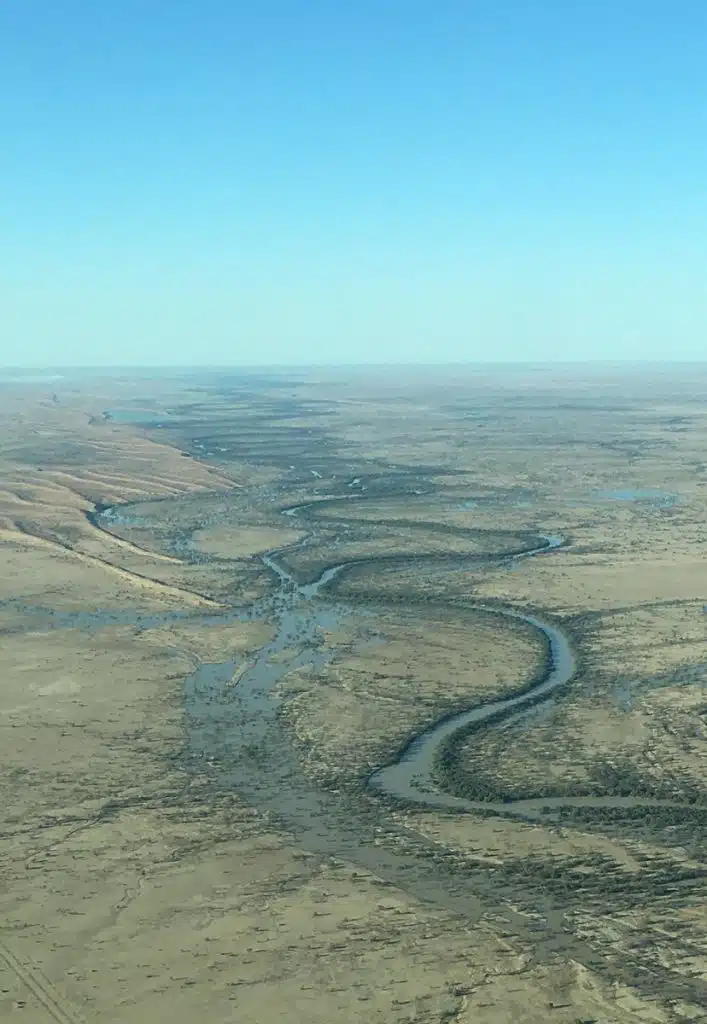You’ve probably seen documentaries about the Okavango Delta: the huge inland system of waterways in Botswana that follows an annual cycle of drying out and then teeming with vegetation and animals as rainfalls brings life back to the Delta.
Australia’s Channel Country follows the same ebb and flow of waters – unlike the Okavango it doesn’t always receive annual water flows, nor does it have hippos and crocodiles – but right now it is coming to life in its own amazing way.
The Channel Country is part of the Lake Eyre Basin, one of the world’s great inland river systems covering one sixth of the Australian continent. Here in the arid centre of Australia, waterways roughly east of Alice Springs, south of Mount Isa and west of Longreach meander southwards towards the lowest natural point in Australia: Kati Thanda-Lake Eyre. Heavy rains in the catchment send flood waters creeping down often-dry water channels, breaking the banks of rivers like the Diamantina and spilling across surrounding grazing land. The greater the flood, the greater the area that is naturally irrigated.
Over millions of years, periodic floods have deposited nutrients to create incredibly fertile arid floodplains. Native vegetation has also adapted to the ebb and flow of the seasons, with vegetation typically small and spread out to minimise competition for scarce water in the prevailing dry conditions. This makes the land look sparse in a normal season, but with rains or floods the protein-rich vegetation bursts into life and can provide enough feed to support cattle for up to a year and a half.
About half of the cattle supplied to OBE Organic comes from outback properties on the main rivers in Australia’s famous Channel Country. Right now many of those properties are rejoicing as the remnants of tropical cyclones in mid-March send floodwaters snaking through the pure heart of Australia to irrigate vast swathes of ancient floodplains.
This current flood is average in size and will see about 10% of the land on vast properties like Kamaran Downs, Adria Downs and Alton Downs (all about 400,000 hectares in size) inundated with water four to five kilometres wide. Properties further south in the catchment will receive less flooding.
Watch footage from ABC News here of floodwaters trickling down dry riverbeds, or watch our Nature’s Perfect Farm video to see how this amazing land produces what we think is the world’s greatest organic beef.









